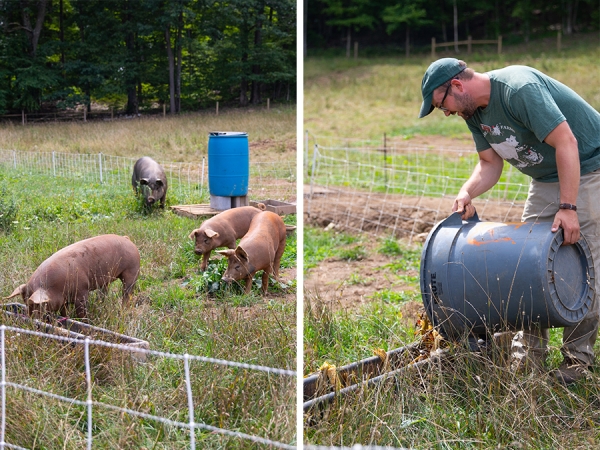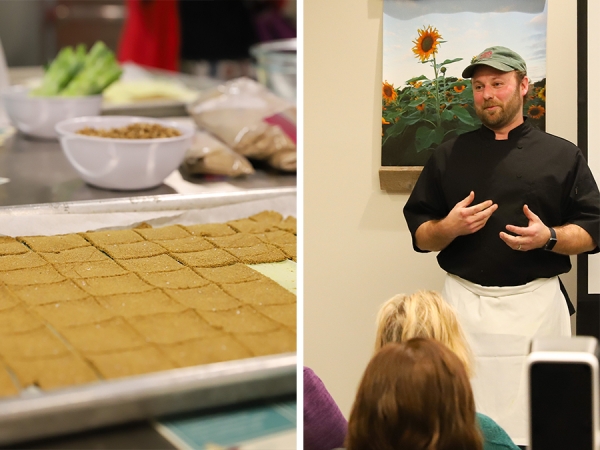Mitigating Food Waste with Creative Cooking
“America does not eat 40% of its food. If the United States went shopping, it would leave the store with five bags and drop two in the parking lot. And leave them there. Seems crazy, but we do it every day.”
-Wasted: How America Is Losing Up To 40 Percent Of Its Food From Farm To Fork To Landfill,
The National Resources Defense Council
The phrase “food waste” isn’t particularly appetizing, but has a global impact. Paul Hawken names reduced food waste as the third-most “substantive, existing solution to address climate change” by 2050 in his recent publication, Drawdown. While most waste occurs in the supply chain before it ever enters our kitchens, the practice of utilizing the whole plant or animal isn’t a fruitless effort.
Chef Jim McCarthy takes food waste very seriously at the Farm. “I like to train the staff to really think about how we can use all the food that is delivered to our kitchen,” he says. They find innovative ways to utilize what would otherwise be relegated to the compost bin: a ‘vegetable’ glace is created by boiling root vegetable peels and scraps down until it becomes thick, and trimmed animal fats are rendered down to serve as cooking mediums.
The food that can’t be stretched further is either sent to our organic compost fields for future use to fertilize fields, or becomes the main dish during our daily “pig party”: when visitors have the joy of feeding exuberant pigs in the Children’s Farmyard.
“We also partner with other local producers to try and utilize their by-products,” Chef Jim explains. “Last season we served a pork dish with ‘all of the by-products from a pint of beer’. We dried and ground the grain to make crackers, flavored the sauce with spent hops, and added the spent yeast to a mashed potato loaded with umami!”
While food waste is a society-sized challenge, mitigating it in our own home kitchens is a part of the solution, even without hours of extra labor rendering down bits and pieces. Sometimes it just takes a little creative thinking and testing. Chef Jim’s Broccoli Stem Hummus* — a dip and spread that is consistently well-received, even by skeptical tasters — is a great recipe to have on hand and provides inspiration for considering the “throw-away” pieces of produce. “Broccoli stems can be boiled in water with baking soda so they can be puréed into a delicious hummus that we serve at the Farm Cart,” he suggests. Additionally, his Spent Grain Crackers* are a delicious way to get some extra life from used grain, a useful recipe for homebrewers to have on hand in the kitchen.
*These recipes were developed by Chef Jim McCarthy for our winter 2017-18 program with City Market and Chittenden Solid Waste District, Wasted: Film Screening & Exploration of Food Waste in Our Community, to benefit Jr Iron Chef VT.

